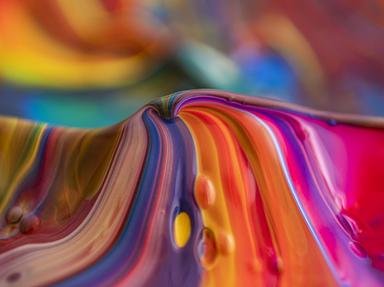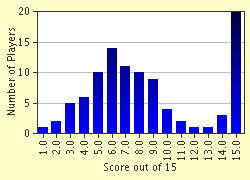Quiz Answer Key and Fun Facts
1. Goya's output included almost no religious art.
2. In 1774, Goya was commissioned by the great German artist Anton Raphael Mengs to execute oil paintings, mostly of genre scenes depicting village life, for the Royal Factory of Santa Barbara. These paintings were used by the factory as "cartoons", from which the factory would create decorative items based on the paintings; what type of items were these?
3. Which of these statements is NOT true of Goya's 1791 painting of Queen Maria Luisa?
4. Goya's 1792 painting "Don Manuel Osorio" is one of his best-known works. Which of these is NOT depicted in the painting?
5. Although he was married, the love of Goya's life is believed to have been the Duchess d'Alba, who is featured in numerous paintings, both formal and informal. Did he also paint her husband's portrait?
6. Goya's 1797 portrait of the Duchess d'Alba contains two hints of their romantic relationship. One is the artist's name written in the sand at the Duchess' feet, to which she is pointing. Another is the names "Goya" and "Alba"; where in the painting do these names appear?
7. In 1800, Goya completed his famous portrait of Charles IV and his family. Many have commented on the devastating candor of this group portrait, amounting almost to caricature. One particularly satirical touch is the pose of the central figure, the Queen, which maliciously mimics that of the central figure in which of these other celebrated Spanish paintings?
8. There exist very few paintings by Goya of the "still life" genre. Of the few that he painted, what was his preferred subject matter?
9. "The Witches' Sabbath" and and "The Congress of Sorcerers" are two of a series of paintings Goya executed for the home of the Duchess of Osuna. These paintings all deal with demons, witches, and folk superstitions. In the two paintings mentioned above, Satan is featured as a central figure; he is depicted in the form of which animal?
10. In 1812, Goya was commissioned to execute a portrait of this celebrated Englishman; who was it?
11. "The Burial of the Sardine", painted between 1812 and 1819, depicts a riotous event which traditionally took place during this holiday.
12. In 1814, Goya painted "The Third of May, 1808: The Execution of the Defenders of Madrid", one of his best-known and most devastating works. Less well known is his painting of the event which immediately preceded the executions, on the second of May, which was completed in the same year. What event did this painting depict?
13. The brutal occupation of Spain by the French armies during the Napoleonic wars wrought a dramatic change in Goya's art. In what would later be called his "black" period, his choice of subject matter increasingly turned to the grotesque and the horrible, although he had never been one to shun the uglier side of life. All but one of the following paintings belong to Goya's "black" period; which one does NOT?
14. Goya executed many portraits of revolutionaries and nobles of his time. Which of these sitters was executed during the counter-revolutionary terror of 1825?
15. In 1824, Goya left Spain and went into hiding in France, settling in Bordeaux, where he spent much of the rest of his life. In 1827, he painted a charming portrait of a young woman from the region; what was her occupation?
Source: Author
jouen58
This quiz was reviewed by FunTrivia editor
Bruyere before going online.
Any errors found in FunTrivia content are routinely corrected through our feedback system.

